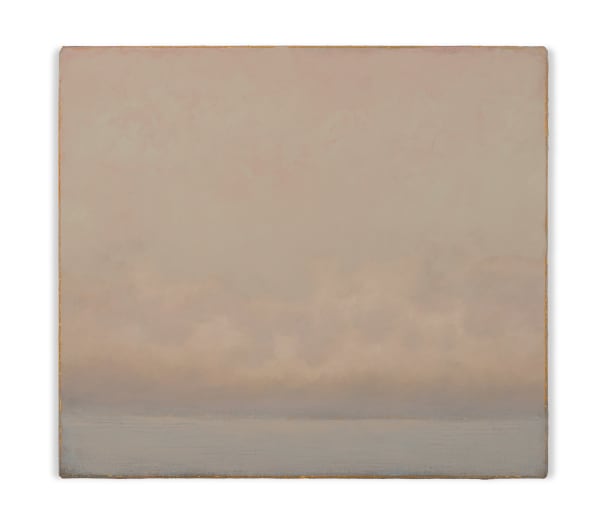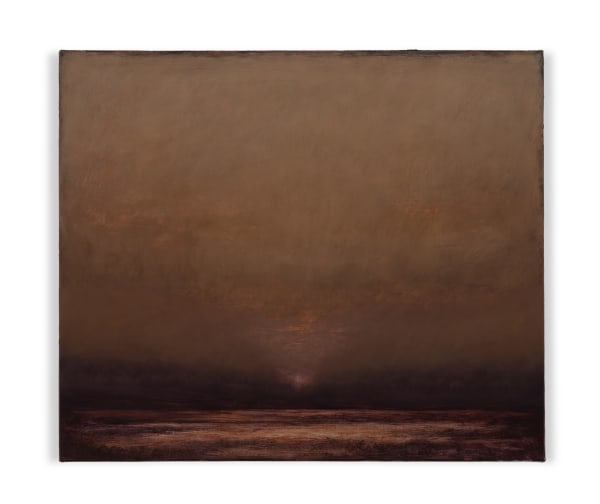Cinza das horas Group Show
Lucas Arruda, Eleonore Koch, Fabio Miguez and Paulo Pasta.
Mendes Wood DM is proud to inaugurate Cinza das horas, a group exhibition organized by Lucas Arruda (b. 1983) that presents his work alongside paintings by fellow Brazilian artists Eleonore Koch (b.1926 - d. 2018), Fabio Miguez (b. 1962), and Paulo Pasta (b. 1959). The exhibition takes its title from a book of poems by the Brazilian author Manuel Bandeira, published in 1917.
The show aims to engage with the work of these artists through a different lens than usual. Rather than using the artists’ shared nationality and socio-cultural perspectives as the connective tissue, as can often be the case with Modern and contemporary Brazilian art, this exhibition instead addresses the notion of painting as the end and not just the means. The resulting work is removed from contemporaneity, from the day to day and from politics; this is painting made “pure”.
Despite profoundly different aesthetic outcomes, they are united by their research into the modulation of light, form and color, their obsessive refining of technique, and a deep understanding of both the material and meditative act of putting color to canvas, whether it be Arruda and Pasta’s preference for oil, Koch’s use of tempera, or Miguez’s combination of oil and wax. What these artists have is common is their engagement with the medium itself, with the painting as an object that exists independently in the world.
A meditative quality, one of the fils rouges of the exhibition, comes across in different forms throughout the work of these four artists, but always seems to point towards a stillness, a kind of temporal suspension that makes these paintings exist somewhere outside of ordinary time.
Arruda’s imagined seascapes are permeated by meticulous brushstrokes, by light and darkness and weather, achieving a deep sense of primordial time. Despite obvious formal and technical differences, Pasta, too, orchestrates the same zen-like pictorial silence in his dense geometries and compositions of pure color.
Further compelling dialogues surface through the abstracted and simplified forms and architectures that appear in Koch and Miguez’ compositions. Objects and colors float in metaphysical plains that suggests contemplation and a kind of solitary reverence that is not religious, but nevertheless spiritual.
Their painting is self-reflexive, rooted in the formal and compositional questions it poses itself, but is also firmly positioned in relation to art history. In terms of the South American canon, the pieces on show resonate particularly with Neo Concretism and the work of seminal painter Alfredo Volpi, who not only taught Koch to use tempera, but whose experiments with chromatic forms and color fields deeply influenced the work of Arruda, Miguez, and Pasta.
However, the most significant art historical resonances to be found in this exhibition are more closely aligned with the European canon. Visible throughout is a multiplicity of references that anchors this diverse group of works to a long and well-trodden path of pictorial research and artistic continuity. Arruda’s use of light and atmosphere is reminiscent in places of William Turner and John Constable, for example; the still, carefully chromatic relation between color, object and form of Giorgio Morandi is echoed in different ways in the compositions of Koch, Miguez, and Pasta; meanwhile, the unexplainable mystery and melancholy of De Chirico’s empty town squares, that sense of physical, pictorial, and metaphysical space seems to permeate everything, from Arruda’s vast horizons to Miguez’s intimate architectures; and all the way back to the early and pre-Renaissance tempera paintings of Fra Angelico, Giotto, and Piero della Francesca, which Miguez openly references in many of his small-scale compositions.
Rather than simply paying homage, these artists are following a long tradition and adopting time-tested material techniques and conceptual approaches to address painterly questions that were as relevant then as they are now, and as timeless as these compositions, seascapes, and architectures appear to the viewer.
-
 Fabio Miguez, Untitled (Piero), 2022
Fabio Miguez, Untitled (Piero), 2022 -
 Fabio Miguez, Untitled (Fran), 2022
Fabio Miguez, Untitled (Fran), 2022 -
 Fabio Miguez, Untitled (Giotto), 2022
Fabio Miguez, Untitled (Giotto), 2022 -
 Fabio Miguez, Untitled (Piero), 2022
Fabio Miguez, Untitled (Piero), 2022 -
 Lucas Arruda, Untitled (from the Deserto-Modelo series), 2022
Lucas Arruda, Untitled (from the Deserto-Modelo series), 2022 -
 Fabio Miguez, Untitled (Giotto), 2022
Fabio Miguez, Untitled (Giotto), 2022 -
 Fabio Miguez, Untitled (Fra), 2022
Fabio Miguez, Untitled (Fra), 2022 -
 Lucas Arruda, Untitled from Deserto-Modelo series, 2020
Lucas Arruda, Untitled from Deserto-Modelo series, 2020 -
 Eleonore Koch, Untitled, 1966
Eleonore Koch, Untitled, 1966 -
 Paulo Pasta, Untitled, 2021
Paulo Pasta, Untitled, 2021 -
 Paulo Pasta, Untitled, 2022
Paulo Pasta, Untitled, 2022 -
 Paulo Pasta, Untitled, 2022
Paulo Pasta, Untitled, 2022 -
 Paulo Pasta, Untitled, 2022
Paulo Pasta, Untitled, 2022 -
 Paulo Pasta, Untitled, 2022
Paulo Pasta, Untitled, 2022 -
 Eleonore Koch, Taking leave from park, 1987
Eleonore Koch, Taking leave from park, 1987 -
 Fabio Miguez, Untitled, 2022
Fabio Miguez, Untitled, 2022 -
 Fabio Miguez, Untitled (Ucello), 2022
Fabio Miguez, Untitled (Ucello), 2022 -
 Lucas Arruda, Untitled (from the Deserto-Modelo series), 2020
Lucas Arruda, Untitled (from the Deserto-Modelo series), 2020 -
 Paulo Pasta, Fim de partida, 2019
Paulo Pasta, Fim de partida, 2019 -
 Paulo Pasta, Untitled, 2021
Paulo Pasta, Untitled, 2021 -
 Fabio Miguez, Untitled (Fra), 2022
Fabio Miguez, Untitled (Fra), 2022 -
 Eleonore Koch, Untitled, 1983
Eleonore Koch, Untitled, 1983 -
 Paulo Pasta, Untitled, 2008
Paulo Pasta, Untitled, 2008 -
 Lucas Arruda, Untitled (from the Deserto-Modelo series), 2022
Lucas Arruda, Untitled (from the Deserto-Modelo series), 2022 -
 Fabio Miguez, Untitled (Sassetta), 2022
Fabio Miguez, Untitled (Sassetta), 2022 -
 Fabio Miguez, Untitled (Giotto), 2022
Fabio Miguez, Untitled (Giotto), 2022 -
 Eleonore Koch, Matta-borrão e papel amassado, 1998
Eleonore Koch, Matta-borrão e papel amassado, 1998 -
 Lucas Arruda, Untitled (from the Deserto-Modelo series), 2022
Lucas Arruda, Untitled (from the Deserto-Modelo series), 2022 -
 Paulo Pasta, Untitled, 2022
Paulo Pasta, Untitled, 2022 -
 Lucas Arruda, Untitled (from the Deserto-Modelo series), 2022
Lucas Arruda, Untitled (from the Deserto-Modelo series), 2022 -
 Paulo Pasta, Untitled, 2021
Paulo Pasta, Untitled, 2021 -
 Paulo Pasta, Untitled, 2021
Paulo Pasta, Untitled, 2021 -
 Eleonore Koch, Memorial Gardens I, 1988
Eleonore Koch, Memorial Gardens I, 1988 -
 Eleonore Koch, Park at nightfall, 1969
Eleonore Koch, Park at nightfall, 1969 -
 Lucas Arruda, Untitled (from the Deserto-Modelo series), 2019
Lucas Arruda, Untitled (from the Deserto-Modelo series), 2019 -
 Fabio Miguez, Untitled, 2022
Fabio Miguez, Untitled, 2022 -
 Lucas Arruda, Untitled (from the Deserto-Modelo series), 2020
Lucas Arruda, Untitled (from the Deserto-Modelo series), 2020 -
 Paulo Pasta, Untitled, 2012
Paulo Pasta, Untitled, 2012








































